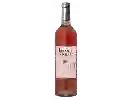
Château BeauboisLes Duos de Beaubois Viognier - Vermentino
This wine is a blend of 2 varietals which are the Vermentino and the Viognier.
In the mouth this white wine is a powerful with a nice freshness.
This wine generally goes well with pork, poultry or rich fish (salmon, tuna etc).
Taste structure of the Les Duos de Beaubois Viognier - Vermentino from the Château Beaubois
Light | Bold | |
Dry | Sweet | |
Soft | Acidic |
In the mouth the Les Duos de Beaubois Viognier - Vermentino of Château Beaubois in the region of Rhone Valley is a powerful with a nice freshness.
Wine flavors and olphactive analysis
On the nose the Les Duos de Beaubois Viognier - Vermentino of Château Beaubois in the region of Rhone Valley often reveals types of flavors of cream, peach or lemon and sometimes also flavors of honey, earth or microbio.
Food and wine pairings with Les Duos de Beaubois Viognier - Vermentino
Pairings that work perfectly with Les Duos de Beaubois Viognier - Vermentino
Original food and wine pairings with Les Duos de Beaubois Viognier - Vermentino
The Les Duos de Beaubois Viognier - Vermentino of Château Beaubois matches generally quite well with dishes of pork, rich fish (salmon, tuna etc) or mature and hard cheese such as recipes of cannelloni of meat, salmon à la plancha with vegetables or lasagne with vegetables and savoy tomatoes.
Details and technical informations about Château Beaubois's Les Duos de Beaubois Viognier - Vermentino.
Discover the grape variety: Vermentino
The vermentino grape variety was widespread in Italy, Sardinia and Corsica. Today, Vermentino is grown in the regions bordering the Mediterranean, mainly in Provence (Côtes de Provence, Bellet), Corsica (Corse Calvi), Languedoc (Côtes du Roussillon, Costières de Nîmes) and the Rhône Valley (Côtes du Luberon). Because it ripens late, Vermentino requires a warm climate for its development and can only be grown in regions with good sun exposure. Conversely, cold or temperate climates do not allow it to ripen properly. Vermentino is only susceptible to powdery mildew. When vinified on its own, Vermentino produces a single-variety dry white wine that is light and full-bodied with a pale yellow color. It can also be blended with other grape varieties such as Ugni Blanc, Cinsault and Grenache, in which case its low acidity makes it light and fresh. Vermentino belongs to the grape varieties of Ajaccio, Corsica and Corbières. The aromas released by this variety are multiple. One can detect notes of fresh apple, green almond, sweet spices, hawthorn, ripe pear and fresh pineapple.
Last vintages of this wine
The best vintages of Les Duos de Beaubois Viognier - Vermentino from Château Beaubois are 2018, 2016, 2013
Informations about the Château Beaubois
The Château Beaubois is one of of the world's great estates. It offers 18 wines for sale in the of Costières-de-Nîmes to come and discover on site or to buy online.
The wine region of Costières-de-Nîmes
The wine region of Costières-de-Nîmes is located in the region of Rhône méridional of Rhone Valley of France. Wineries and vineyards like the Domaine Scamandre or the Château d'Or et de Gueules produce mainly wines red, pink and white. The most planted grape varieties in the region of Costières-de-Nîmes are Mourvèdre, Roussanne and Viognier, they are then used in wines in blends or as a single variety. On the nose of Costières-de-Nîmes often reveals types of flavors of non oak, thyme or raisin and sometimes also flavors of clove, cocoa or coffee.
The wine region of Rhone Valley
The Rhone Valley is a key wine-producing region in Southeastern France. It follows the North-south course of the Rhône for nearly 240 km, from Lyon to the Rhône delta (Bouches-du-Rhône), near the Mediterranean coast. The Length of the valley means that Rhône wines are the product of a wide variety of soil types and mesoclimates. The viticultural areas of the region cover such a distance that there is a widely accepted division between its northern and southern parts.
The word of the wine: Foaming
Name given to the second alcoholic fermentation that sparkling wines undergo. It gives rise to a release of carbon dioxide in the bottle.














